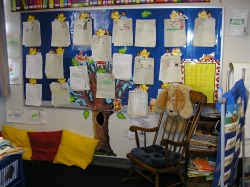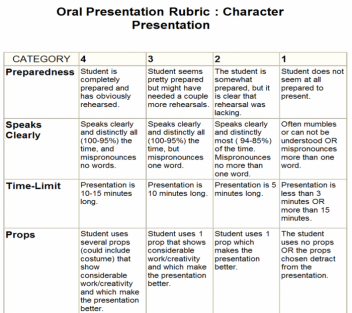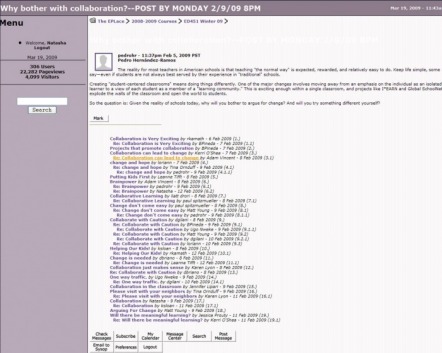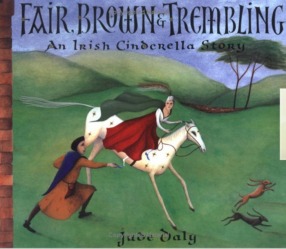Using Technology to Assess
A recent article by Education Sector, an independent educational research team, posits that technology can provide students with innovative ways to express learning, enabling more in-depth assessment of skills and content knowledge. Read the article to learn more.
Authentic Assessments:
Portfolios, Rubrics, Reflections

An essential tennet of experiential learning and differentiation is the use of multiple forms of assessment, going far beyond multiple choice questioning. This website is an example of a portfolio, incorporating the essential learnings of this tech class with my fundamental new understandings and real-world applications. Rubrics are assessment tools that allow students creative freedom for differentiated and interest-based learning, while ensuring that the learning goals have been met. Reflection is an essential skill that can be honed through revisiting experiences to derive further learning from them. Certainly, these assessments are more time intensive for both students and teachers, but they are worth it!
Portfolios:

Rubrics:

3 Example Rubrics Follow:
(Rubrics are becoming easy as pie to make with RubiStar.)
| book_jacket_rubric_.xls.htm |
| collaboration_ribric.xls.htm |
| group_planning.doc |
Click here to make a rubric of your own:
http://rubistar.4teachers.org

RubiStar is a non-profit, free tool that gives teachers access to premade, customizable rubrics. Requiring just a sign-in, RubiStar will save you tons of time and allow for more rubric-based projects.
___________________
Reflections:
Reflecting is an essential component for Project Based Learning, and should be an important learning and assessing piece no matter the type of educational theory we practice. It is through reflection that learners create meaning from experiences and it is the most effective way to ensure that students have understanding of a particular concept. Reflection can happen in a variety of ways, whether through a digital or voice media, a portfolio, written work and/or art. When students do an experiment or take part in a lesson they are gaining knowledge. However it is only by reflecting that students are able to apply that knowledge and make connections to their world. It is the act of analyzation that allows real and meaningful learning to take place. Below is an example of one way reflection can be done.
Example of Reflections Integrating Technology:

In my Technology for Teachers Master's course my teacher set up an online blog where we could reflect; on learning done in class, experiences teaching with technology, and our course readings. He also provided us with a prompt that would both engage us and connect our experiences and our readings. Most often the prompt was in the form of a quote and an open-ended question that inspired us to develop new meaning from the old. Also, we were able to read eachothers posts and respond to them, allowing a conversation to come into being and a growing comprehension of the variety of understanding.
Below are two examples of my own reflecting prompted by Professor Hernandez-Ramos:
Reflection #1: For the following reflection we were asked to watch the following video and answer the questions:
Reflection Question:
Reflect upon the video to the left. Think about what ideas and issues we have addressed in this course and how they link to what the kids say.
Imagine that the video was presented to you as the "evidence of learning" for a semester-long project by the students who appear in the video. How would you assess their video? What "grade" would you give them? What else would you need to feel comfortable that the students "actually learned something"?
Refection: Assessment would have to depend on the rubric that the students and I had agreed upon but I feel that it was an amazing piece of work. Technically this video was amazing. I am especially in awe because I now know that making a video, let alone one with any kind of production value, is an exacting job. They had obviously prewritten and preplanned all the shots and how each would fit with the other. Once they had thought out what their big idea would be, they added Machima to support this concept - something that educators generally know nothing about but most of our students identify with. The concept of their future was beautifully illustrated.
Looking now at content, the message that I got from this video is that our students are growing up in a technical and specifically, gamer, society and nothing of how they chose to spend their time is incorporated into their school day. This short impressed me as smart, sincere, and poetic. I was especially struck by the line "School should be like a game; if you don't do it right the first time, do it over." Students, and gaming adults, spend an enornous amount of time learning to do things in virtual worlds. They often must repeat scenarios over and over again to have all the necessary skills to continue. Then, they repeat the entire game on a more difficult setting, because they always want to be challenged. However, they also need to know that it can be done and they will do it. When they feel this is true, there is no stopping them! Too often, in today's testing-centered society, students are told that they aren't good enough and won't be good enough. This happens whether educators are aware or not. We need to ensure that students always feel that they can do anything with time.
Finally, this video relates perfectly to all that we've been discussing throughout the past two quarters. Technology is an amazing tool that provides an increadible array of choices and options for differentiation. The more I learn about current technology the greater my resolve becomes to learn about, from, and to incorporate these tools into my classroom. As the video shows, students are ready and waiting to see and use technology in their classrooms. It is more than simply a leaning facilitator, it is a motivator. It is our duty as educators to provide our students with the tools that will make them successful and the tools that will engage every learning style. These tools can be found in today's technology. It is up to us, our peers, and our students to discover with open minds, the best applications for the wealth of new technology available to us!
Find out more about Machinima at www.machinima.com
Learn how to make Machinima at http://www.wikihow.com/Make-a-Machinima
Reflection #2: The following reflection was designated to develop connections between our homework readings and our teaching practice.

Learning Prompt: Jonassen et al (in Chapter 1, p.3) identified 5 characteristics of meaningful learning: That it is active, constructive, cooperative, authentic, and intentional. Reflect back on your own learning history, and share one experience that would meet all of these criteria. What makes this experience meaningful for you?
Reflection: My best memory of elementary school is of just such an experience. My 2nd grade teacher, Mrs. Wong, was very much a project oriented teacher. The project that stands out in my mind was our Cinderella Project. At the time it was standard in the 2nd grade curriculum to teach "Cinderella Around the World", reading a variety of Cinderella stories as a way to compare and contrast different cultures. In Mrs. Wong's class, however, nothing was standard.
In addition to the standard fare, Mrs. Wong had us write to pen pals she'd set up from each of the different countries in our story. We asked questions about the cultural differences in the books and answered the questions our pals had for us, with Mrs. Wong's help, of course. Next we shared what we had learned with the entire class. In groups of five we created a "Multicultural Cinderella" play, writing and story-boarding it, before performing it to the class.
Without knowing it, we had learned and assimilated some of the attributes that distinguish cultures from one another, from authentic sources. We learned about cooperation, how to write and story-board a performance, speak to an audience, analyze texts, and many other skills. We did all this without even knowing it, only that we had an exciting project to do. Certainly, it was much more work for Mrs. Wong than we ever would have imagined at the time, but it was such an amazing experience that it sparked me to want to teach 2nd grade. Thank you, Mrs. Wong!
It has effected me especially since becoming a teacher and learning that education isn't as embracing of active learning as I had thought. Now, with the emphasis on testing, differentiation and Project Based Learning seem to have fallen by the wayside. Still, I had such a meaningful learning experience with Mrs. Wong, among other great teachers, that I am driven to provide my students with similar opportunities!
Reflecting on my reflections :*): Many times I needed to reflect for quite a while before I could post, but afterward I felt that I had a much greater understanding of my own learning. I enjoyed reading other posts and seeing where I may have gone wrong or misinterpretted something or just seeing an issue from another perspective. Whatever the case, I've definitely come to the conclusion that the more minds engaged on a topic, the better and more enriched my understanding became. I will use this, a vlog, or Twitter in my classes from here on out!